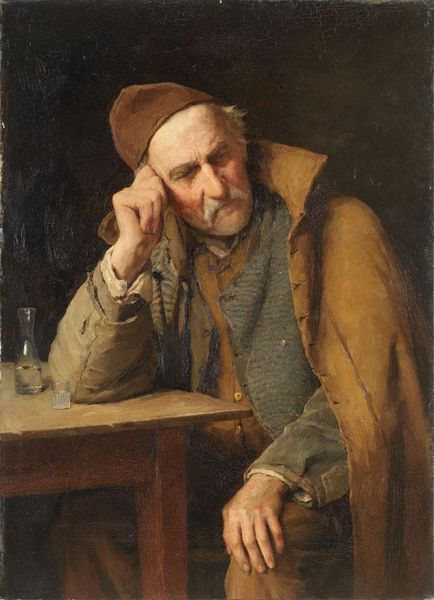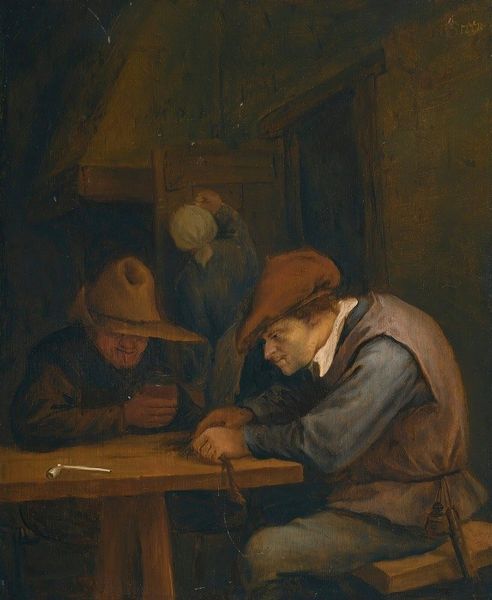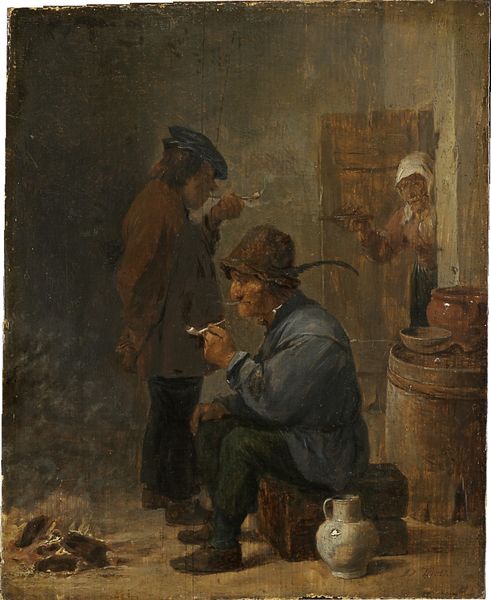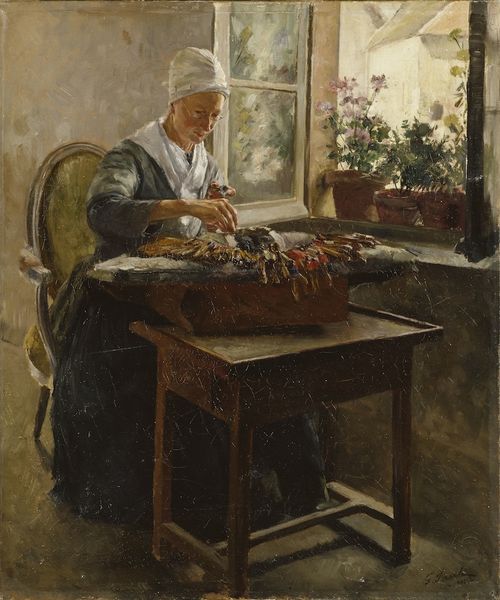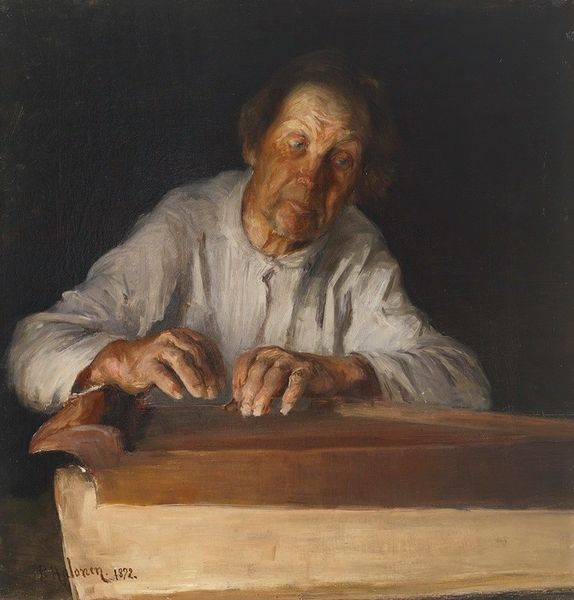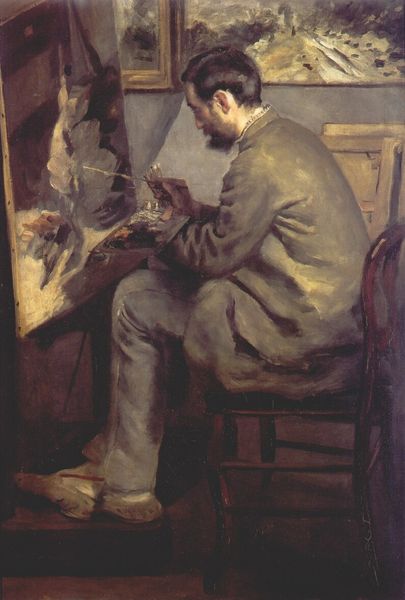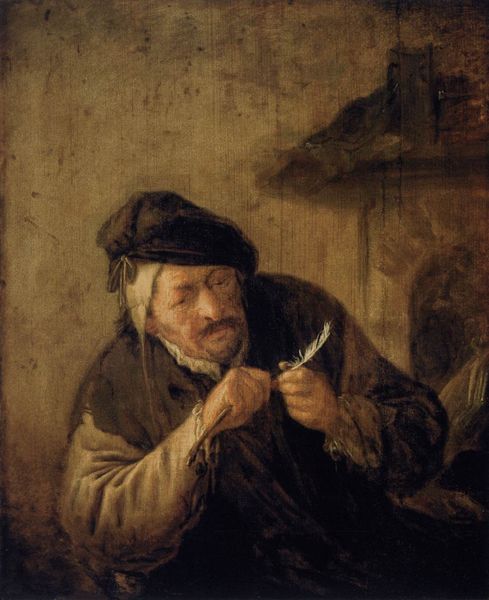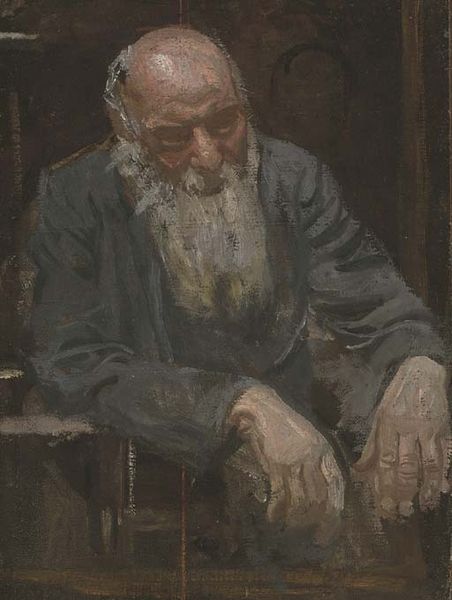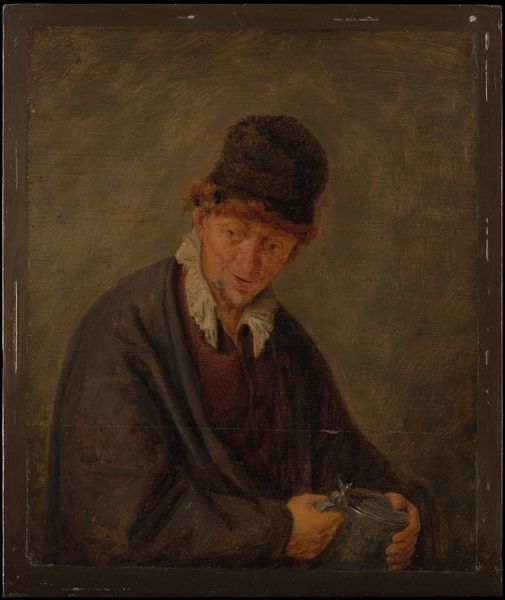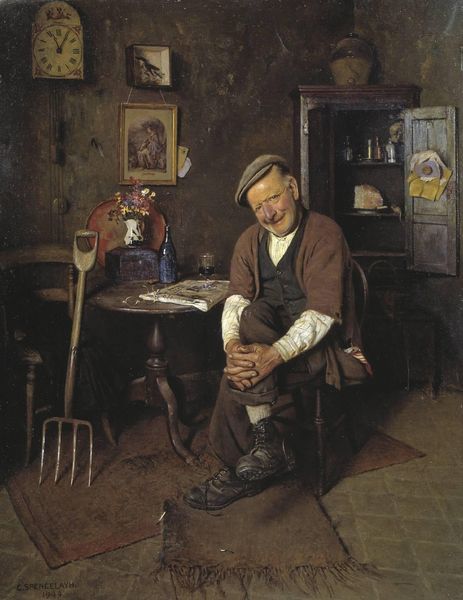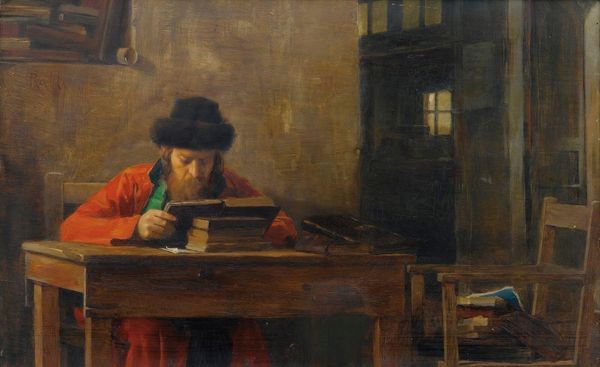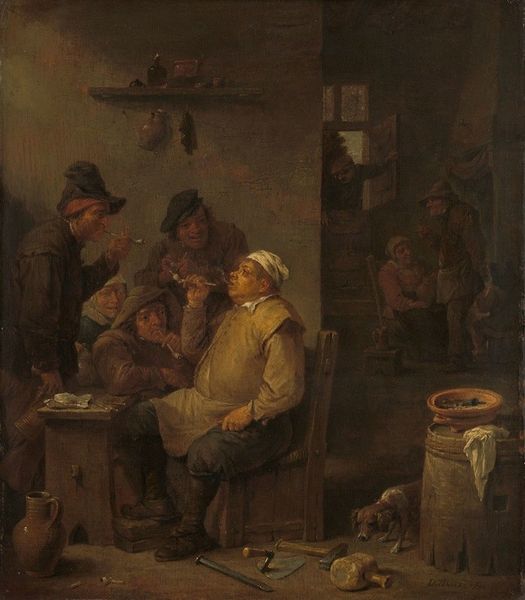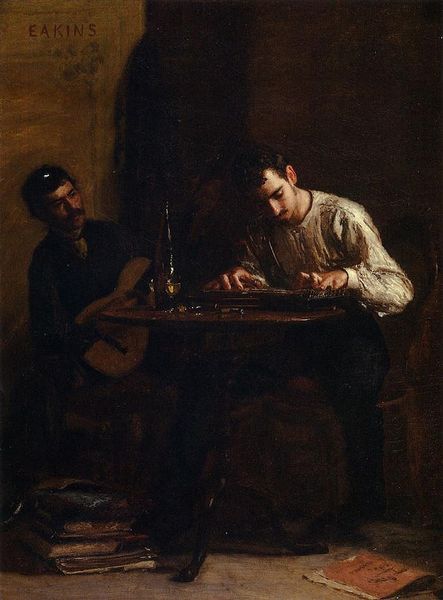
Copyright: Public domain
Editor: This is "The Village Tailor," painted by Albrecht Anker in 1894. It's an oil painting, depicting, well, exactly what the title suggests! I find it incredibly intimate, almost melancholic in its quiet focus. What symbolic weight might it carry? Curator: Anker, indeed, captures a powerful image of societal continuity. What do you observe beyond the surface-level representation? Notice how the tailor’s hands, aged and worn, meticulously mend the fabric. Consider this in relation to the cyclical nature of mending – repairing not only cloth, but also potentially the social fabric of the village. What feelings does the darkness surrounding him evoke? Editor: It definitely emphasizes his solitude, like he’s carrying the weight of the community on his shoulders. It's poignant. Does his clothing tell us anything further? Curator: Precisely. His humble attire, coupled with his dedicated labor, speaks volumes about the dignity of work. And consider, tailoring itself holds symbolic value - of fitting in, adapting, being remade or restored. It reminds me of depictions of Saint Joseph at his workbench. Is there a religious or moral dimension to the artist’s decision? Editor: Hmm, I never thought of it like that! So, it's not just a portrait of a tailor, but also a portrait of a certain value system, where diligence and community service are venerated. Curator: Precisely. The cultural memory embedded here transcends a simple portrayal of labor. It also preserves a fading era and, further, the hope for redemption and preservation. Editor: I’m starting to see how much depth a seemingly simple image can hold! I am really fascinated by how the symbols, or images can affect one’s understanding. Curator: The layers reveal themselves when we are willing to look closer. Now, can you appreciate Anker's legacy with an enriched sensibility?
Comments
No comments
Be the first to comment and join the conversation on the ultimate creative platform.
